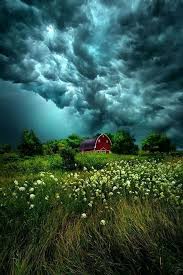On a day when nature showcased its dual power, India found itself split between the calm of the cosmos and the chaos on the ground. While meteor showers painted the sky with streaks of light, torrential rains battered parts of the country, causing landslides, flooding, and widespread disruption.
This rare juxtaposition of astronomical wonder and extreme weather is a stark reminder of the climate and cosmic forces that shape our lives.
Shooting Stars Brighten the Night
The skies over India lit up with a stunning display of twin meteor showers on the night of July 29–30. The Southern Delta Aquariids and Alpha Capricornids, both active annually in late July, peaked together an event visible from many parts of the country.
With clear skies in areas like Ladakh, Rajasthan, and parts of Central India, stargazers reported sightings of 20 to 25 meteors per hour, including rare fireball sightings from the Alpha Capricornids.
This year’s showers were particularly visible due to new moon conditions, making the sky darker and ideal for observation.
Widespread Rain and Flooding Across India
While the skies brought fascination, the land below was drenched. The monsoon remained relentless, bringing heavy rains and disaster alerts to multiple states.
Northern Hills Disrupted
- Himachal Pradesh suffered significant damage, with landslides closing the Chandigarh Manali highway for over 15 hours.
- Uttarakhand also saw waterlogging and landslide threats, with officials advising against unnecessary travel.
Northeast and Central India Flooded
- In Assam, more than 3 lakh people were affected as rivers surged past danger levels.
- Local authorities activated relief camps and boat services in hard-hit districts.
Maharashtra Inundated
- Mumbai and surrounding areas received over 180mm of rainfall in just 24 hours, causing traffic gridlocks and train delays across the metro region.
Monsoon Extremes Are the New Normal
Climate experts warn that these erratic patterns intense rainfall, flash floods, and growing landslide risk are becoming increasingly common due to climate change.
Frequent short-duration heavy downpours, combined with poor drainage systems, are increasing the risk of urban flooding and transport breakdowns across India.
Staying Safe Amid the Spectacle
As nature continues to unfold its extremes, both skywatchers and residents in affected areas are urged to remain vigilant and prepared.
Recommended Actions:
- Avoid travel to flood- and landslide-prone zones unless absolutely necessary.
- Track weather warnings using IMD apps and local government portals.
- Prepare emergency kits including essentials like food, water, torch, and first aid.
- For astronomy enthusiasts, attend organized skywatch sessions or use mobile apps for safe stargazing information.
Looking Ahead: More Skies to Watch
Nature’s display doesn’t stop here. The coming month offers even more skywatching opportunities:
- The Perseid meteor shower, expected in mid-August, is one of the brightest and most popular yearly showers.
- Saturn’s Opposition on August 27 will allow skywatchers to spot the planet and its rings clearly even with modest binoculars or amateur telescopes.
Interest in astronomy is growing rapidly in India, with more youth joining clubs, attending online workshops, and sharing astrophotography on social platforms.
Conclusion: Awe and Awareness Go Hand in Hand
July 30, 2025, delivered an unforgettable display of cosmic beauty and earthly unrest. As meteors streaked across the sky, relentless rainfall brought cities to a standstill. India must now adapt to this era of duality appreciating the stars above while preparing for the storms below.




